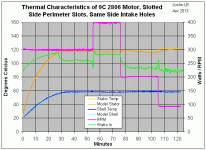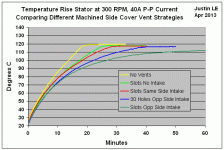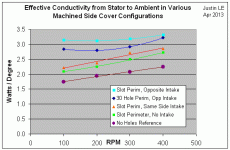Spicerack
10 kW
More designs to consider for air cooling?
Mine are a case of a bit here and a bit there....
(from my bike thread)
The motor was second hand and had some holes drilled in the freewheel cover (which I took out to the outside edge) so I drilled some more in the brake side with a slightly different design.
I also chucked an impellor from an old vacuum cleaner on the brake side- I was thinking it might help direct some air into the intake holes which are drilled underneath it near the axle. This is designed to fling air from inside to outside and I'm using it in reverse so who knows what will happen- it's also spinning a lot slower than design speed.
When I did a smoke test with it this evening, it appears to suck a little bit of the smoke in but with no baseline to work with I'm not looking for improvements, just whether it works at all as I'd like to put 3-4kw through it.


The untested vaccum impellor:


Mine are a case of a bit here and a bit there....
(from my bike thread)
The motor was second hand and had some holes drilled in the freewheel cover (which I took out to the outside edge) so I drilled some more in the brake side with a slightly different design.
I also chucked an impellor from an old vacuum cleaner on the brake side- I was thinking it might help direct some air into the intake holes which are drilled underneath it near the axle. This is designed to fling air from inside to outside and I'm using it in reverse so who knows what will happen- it's also spinning a lot slower than design speed.
When I did a smoke test with it this evening, it appears to suck a little bit of the smoke in but with no baseline to work with I'm not looking for improvements, just whether it works at all as I'd like to put 3-4kw through it.


The untested vaccum impellor:











